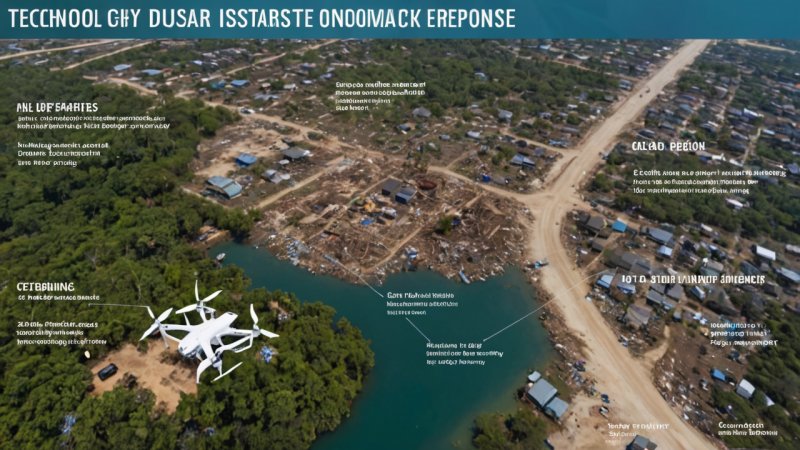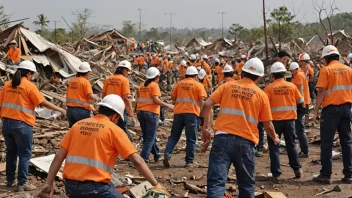In an increasingly interconnected world, the role of technology in disaster response has become more critical than ever. Natural disasters, from hurricanes and earthquakes to floods and wildfires, pose significant threats to human life and infrastructure. However, with advancements in technology, the capacity for rapid response and effective recovery has improved dramatically. This article explores how various technological innovations are reshaping disaster response efforts, enhancing communication, improving logistics, and ultimately saving lives.
Real-Time Data Collection and Analysis
One of the most profound impacts of technological advancements is the ability to collect and analyze data in real-time. Drones equipped with high-resolution cameras can survey disaster-stricken areas, providing critical information about the extent of damage and identifying areas that require immediate assistance. This aerial perspective allows responders to make informed decisions quickly. Additionally, satellite imagery and geographic information systems (GIS) can help map out affected regions, enabling agencies to allocate resources more effectively.
Communication Technologies
Effective communication is vital during disasters, and technology has significantly enhanced this aspect. Mobile applications designed for emergency alerts can disseminate information to the public in real-time, ensuring that individuals are aware of impending dangers. Social media platforms also play a crucial role, as they can be used to share updates, coordinate volunteer efforts, and provide a space for affected individuals to seek help. Furthermore, innovations like mesh networks can maintain communication even when traditional infrastructure is compromised, ensuring that responders can stay connected in the most challenging conditions.
Logistics and Supply Chain Management
The logistics of disaster response can be daunting, but technology has streamlined many processes. Advanced software solutions can optimize supply chain management, ensuring that food, water, medical supplies, and other necessities reach those in need promptly. Tracking systems enable organizations to monitor the movement of supplies in real-time, minimizing delays and loss. Moreover, the use of blockchain technology can enhance transparency and accountability in the distribution of aid, ensuring that resources are used efficiently and ethically.
Artificial Intelligence and Predictive Analytics
Artificial Intelligence (AI) is revolutionizing disaster response by predicting potential disasters before they occur. Machine learning algorithms analyze vast amounts of data to identify patterns and trends, allowing for better forecasting of disasters such as floods or wildfires. This predictive capability enables communities to prepare in advance, potentially saving lives and reducing the impact of disasters. In addition, AI can assist in damage assessment post-disaster, helping responders prioritize their efforts based on the severity of the destruction.
Community Engagement through Technology
Community involvement is essential in disaster response, and technology has made it easier for individuals to engage. Crowdsourcing platforms allow citizens to report incidents, share resources, and volunteer their time or skills. This engagement fosters a sense of community and empowers individuals to take action in times of crisis. Moreover, training programs delivered through online platforms can prepare community members for disaster response, equipping them with the knowledge and skills necessary to help their neighbors effectively.
Challenges and Considerations
While the benefits of technology in disaster response are evident, challenges remain. The digital divide means that not all communities have equal access to technology, which can exacerbate inequalities during disasters. Additionally, reliance on technology raises concerns about data privacy and security. Organizations must navigate these challenges while ensuring that technological solutions are inclusive and accessible to all, especially the most vulnerable populations.
The Future of Disaster Response
Looking ahead, the integration of technology into disaster response will continue to evolve. Innovations such as virtual reality (VR) and augmented reality (AR) may provide immersive training experiences for responders, enhancing preparedness. Furthermore, advancements in renewable energy technology can ensure that response efforts remain sustainable, even in the face of environmental challenges. Collaboration among governments, NGOs, and tech companies will be essential to harness the full potential of these advancements, ensuring that disaster response is as effective as possible.
Conclusion
The impact of technological advancements on disaster response is profound and multifaceted. From real-time data collection to improved communication and logistics, technology has the power to save lives and enhance recovery efforts. However, it is crucial to address the challenges that come with these advancements to ensure equitable access and ethical use. By embracing innovation and fostering collaboration, we can build resilient communities that are better prepared to face the challenges of natural disasters. As individuals, we can stay informed, support local initiatives, and advocate for the responsible use of technology in humanitarian efforts, ultimately making a difference in the lives of those affected by disasters.






